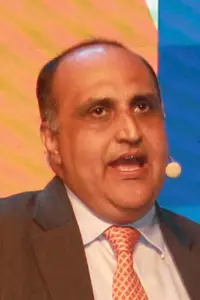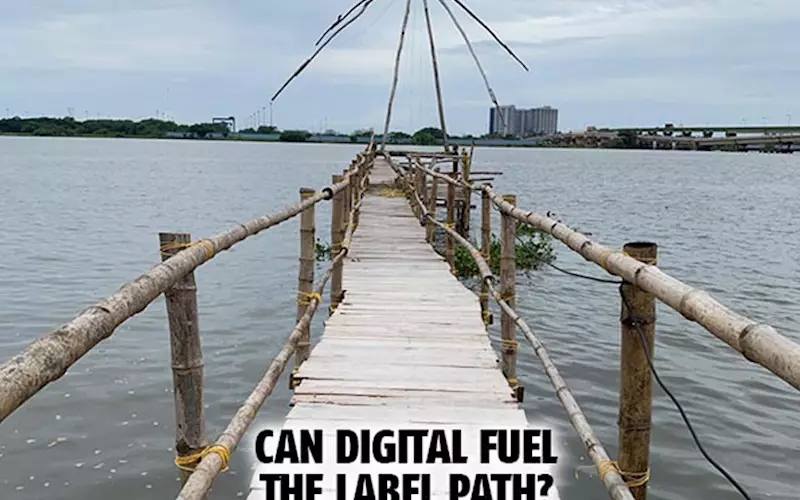Can digital fuel the label path? – The Noel D'Cunha Sunday Column
The LMAI Conference 2019 in Kochi focussed on label printers embracing digital print technology. But with flexo showing no sign of an ebb, the question is: how long will it take for digital to arrive in India?
PrintWeek India spoke to 11 leading voices at the show, and what they had to say was pertinent
02 Aug 2019 | By Noel D'Cunha
| Priyata Raghavan, director at Sai Packaging |
|---|
|
But how can one do more? Would not converting process have to go digital to get the speed-to-market factor right? What is the Sai method? How does one ensure traceability of the original file to the press? How does one manage it? So what is green or sustainable? What can our industry do? Is the onus of green printing only on the labellers? |
|
Tejas Tanna, director Printmann Group |
|---|
|
Digital does not mean only print equipment but the entire ecosystem which includes workflow? What does green mean for you? |
| Vivek Kapoor, chief executive director, Creative Labels |
|---|
|
Digital does not mean only print equipment but the entire ecosystem which includes workflow? Guarantee green to the brands |
| Denver Annunciation, director, Janus International |
|---|
|
You can print it fast, but what about finishing? Your view on a digital workflow? Is converting kit crucial? Even for a good number of jobs? So, software is the key? Clean and green for you is? |
| Aaditya Kashyap, managing director, Marks Group |
|---|
|
Tracking data from file to press to final printed label is important, isn’t it? Any other purpose of tracking the data? Green talks at LMAI – so much done, so much to do? |
| Sandeep Zaveri, managing director, Total Print Solution |
|---|
|
The three questions - digital’s ability to improve time to market, file handling and sustainability, can be successfully implemented provided the attitude of all of us changes. Attitude with respect to brand owners on innovation or just-in-time, there is always a cost to the technology. There is a need for change in the market given the competition, demand for short runs and security printing. Digital technology definitely justifies being there. But, it all boils down to investment be it in areas from traceability to the finished labels. It is certainly possible. Many printers have implemented ERP software. The key to growth where you become more system-oriented. Each one of us is responsible socially so go green the concept is a must. |
| Krish Chhatwal, director, Kwality Offset Printers |
|---|
|
We also have flexo presses, but currently, I would say digital has helped us garner more customers. How? It has helped us enter different segments of the packaging market, with variable printing capabilities, like pharma. But deploying digital, we save 30% on input material like label stock, ink, and electricity. Also, for digital we do not use plates, so we are not cleaning them. When you don’t use flexo plates and chemical during the platemaking process, it not just saving monies, but also the environment. Because you polluting the environment with harmful chemicals. |
| Manish and Aarjav Hansoti of S Kumar |
|---|
|
The advantage of going digital is saving on tools and raw material for label printers, and the brands can save on inventories because their requirements can be served just-in-time. In my opinion, digital fits the test-market bill just perfectly. |
Ranesh Bajaj, managing director, Vinsak
 Can digital print improve time-to-market?
Can digital print improve time-to-market?
I don't agree that digital print will improve time-to-market simply because label print is 50% of the story, finishing is the other 50%. Even if one can print the job quickly, if there aren’t fast-finishing machines to back the printing speed, it’s not going to make a difference. Let me put it this way. Digital printing is for short runs, short runs are for premium products which want fancy looking finishing. So accomplishing all those finishing requirements like foiling will take time. The entire ecosystem has to be in place, if one has to meet the just-in-time requirements of the clients.
How does one ensure traceability of the original file to the press?
Ensuring traceability of the files from the time it is received to the print stage, is essential. For this one needs to have a complete workflow like JDF for labels operation. This should start from pre-press, all the way to delivery.
Are we there?
I think it’s another ten years more. It’s more an evolution part for the label industry in India.
Your view on green?
In the label industry, liners are the biggest green destroyer. We will have to go linerless. The industry is moving away from PVC films – and convincing people to the use of paper. But if you see most of the organic packaging is Kraft paper, brown coloured. You try to sell an organic product in a bright yellow bag, nobody will buy it. I am also talking to a lot of companies where the solution to handling plastic is by setting up reverse logistics.
Aha. You are a plastic person?
We must understand that plastic per se is not bad. It has the lowest cost per SKU, functionality is the best – be it water-resistant or migration qualities. The only problem is people tend to dispose of it irresponsibly. If we are able to put in place a reverse logistics process like in Canada, incentivise the consumer to bring the plastic products for recycling,
Who has to do it?
I think the onus is on the brand owner. They’d always see what’s available, or which are the low-hanging fruit. But I think the label printers will also have to get themselves up to speed and say, look, this is what you need to do.
Ganapathy Thillai, application sales manager, flexo sales for South Asia region at Esko

With the kind of technology available today, digital print can improve labels time to market.
How does one ensure traceability of the original file to the press?
Esko has software that can ensure traceability of files. We have inspection tools that help, AI-enabled processes which send the same file to the inspection system of the press, and so on to check the results. This pre-press software ensures that the brand owners get the same kind of product which has been approved.
Is India ready?
A good number of Indian label converters are tuned to such systems. All they need to do is to collect the data and cross verify it.
Your view about green?
From the pre-press point of view, the best way to go green is to move to solvent-less or water washable technology. This is considered to be a clean technology. Moving forward, we need to educate the users, bring value propositions in going green, like the savings it can bring to the table, which makes for good business sense.
Akshat Pardiwala, director, Nippon Color
 Can digital print improve time-to-market?
Can digital print improve time-to-market?
Yes, as we eliminate platemaking and reduce the set-up time in digital presses, labels can start printing quicker. The main drivers for the growth of digital printing in labels and packaging would be personalisation/variable data printing. India is a vast and diverse country with so diverse languages. Label manufacturers can offer labels in regionalised languages in every state. Then you add seasonal products, group-specific products, prototyping, test marketing, and more in the mix. All these will act as a new revenue stream which will not only help them serve their existing customers, but help them reach out to new ones.
Ensure traceability of the original file to the press, to the job validation and final storage of data generated from the final printed label
I believe using the JDF standard developed by CIP4 that automates the digital workflow can ensure this. It will bridge the communication gap between production and management information systems.
Guaranteeing green for the brands
It does not “guarantee”, but it does help in the green movement. Faster makeready means less makeready waste, which means a reduction in waste of paper and ink. Water-based inkjet inks have been developed, reducing toxins in the waste stream. With platemaking eliminated in digital printing, you are eliminating a step that produces waste in terms of chemicals and VOCs. Moreover, lesser machines required and lower footprint of digital machines means more efficient use of space, reduce labour, materials and electricity required as compared to a conventional flexo set-up.



 Can digital print improve time-to-market?
Can digital print improve time-to-market? Will digital improve time-to-market?
Will digital improve time-to-market? Will digital improve time-to-market?
Will digital improve time-to-market? You have both flexo and digital printing capabilities. Has digital print helped you reach the market quicker?
You have both flexo and digital printing capabilities. Has digital print helped you reach the market quicker? You say digital process shall improve time to market. How?
You say digital process shall improve time to market. How? India is moving quite rapidly and is at par with the best in the world or perhaps, even better.
India is moving quite rapidly and is at par with the best in the world or perhaps, even better.  It’s been over a year since we brought in digital, and it has given our business a new edge. It has reduced our lead time to the market, both for the existing customer as well as new customers. We don’t have to produce plates, which is a huge advantage. We have an offline Digicon Series 3 converting machine, which is dedicated to only digital prints. The Digicon is so quick that it can accommodate prints from two digital printers.
It’s been over a year since we brought in digital, and it has given our business a new edge. It has reduced our lead time to the market, both for the existing customer as well as new customers. We don’t have to produce plates, which is a huge advantage. We have an offline Digicon Series 3 converting machine, which is dedicated to only digital prints. The Digicon is so quick that it can accommodate prints from two digital printers.  I think there are two aspects to it. One is to printing proofs and printing the required number of labels as approved. Digital helps us complete both tasks quickly and efficiently. Now, if we have to rely on the conventional method to produce proofs and print the order, will certainly dent the speed to market. The other advantage of digital printing is that one can provide more numbers of design proofs. This is not feasible in flexo.
I think there are two aspects to it. One is to printing proofs and printing the required number of labels as approved. Digital helps us complete both tasks quickly and efficiently. Now, if we have to rely on the conventional method to produce proofs and print the order, will certainly dent the speed to market. The other advantage of digital printing is that one can provide more numbers of design proofs. This is not feasible in flexo.







 See All
See All